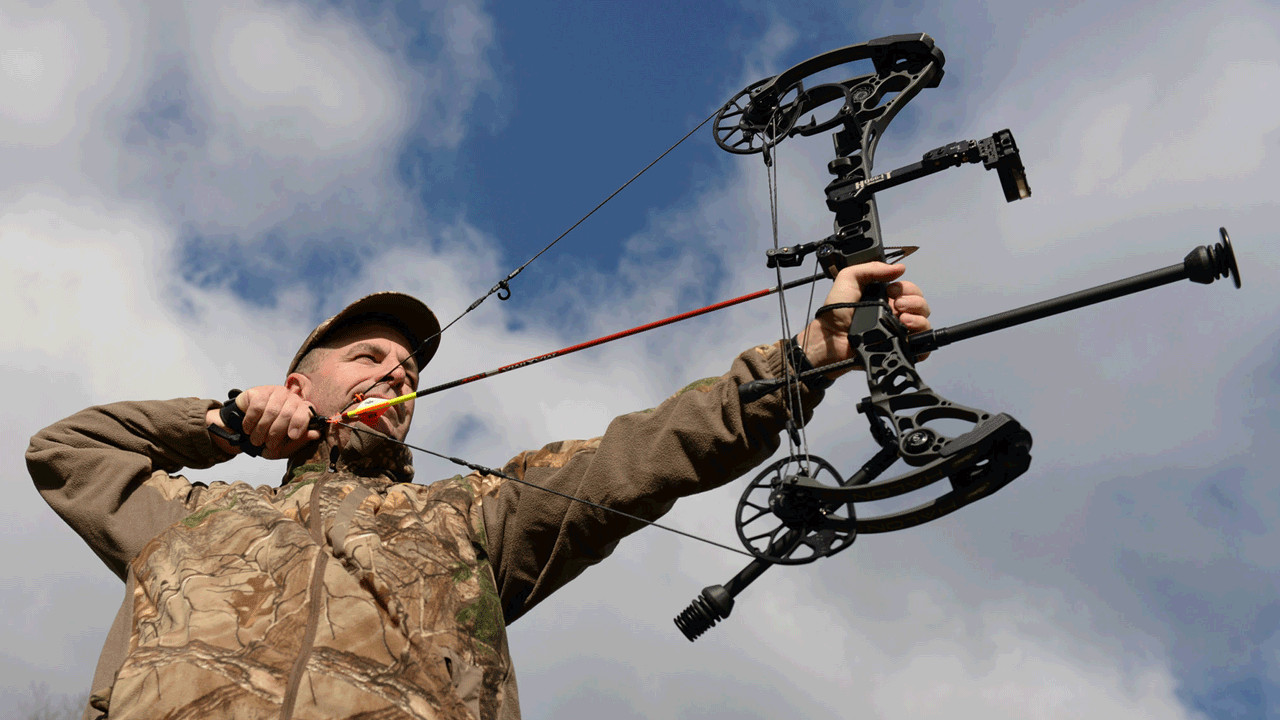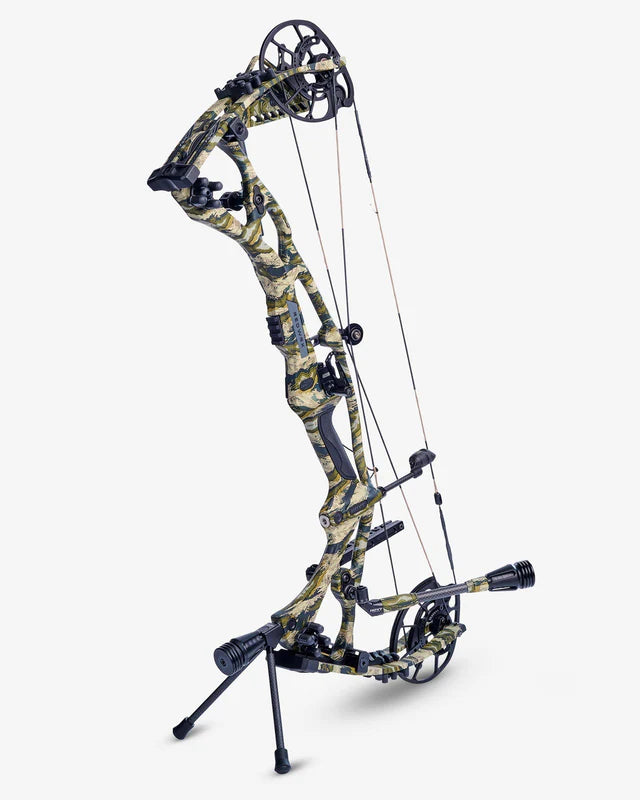The Scientific Research Behind Archery Stabilizers: How They Boost Performance
The Ultimate Overview to Choosing the Right Archery Stabilizer for Boosted Precision
Archery is a sporting activity that demands precision and precision, and picking the appropriate devices is essential for achieving ideal outcomes. Amongst the different accessories readily available, an archery stabilizer plays a substantial role in improving accuracy. With so many options on the market, it can be frustrating to figure out which stabilizer is the best fit for your demands. In this detailed overview, we will discover the crucial variables to consider when selecting an archery stabilizer for enhanced accuracy. From finding the optimal length to comprehending the various designs and products, we will explore whatever you need to recognize to make an informed choice. So, whether you are an experienced archer looking to upgrade your equipment or a novice seeking guidance, join us on this trip as we untangle the tricks to selecting the perfect archery stabilizer.
Length: Locating the Ideal Stabilizer Length
Determining the suitable stabilizer length is important when choosing an archery stabilizer for optimum performance. The size of a stabilizer straight impacts the balance, security, and precision of the bow. A stabilizer that is also long can make the bow really feel challenging and top-heavy to control, while a stabilizer that is too short might not offer adequate stability and dampening of resonances. Discovering the ideal length requires taking into consideration elements such as the archer's shooting design, bow weight, and personal preference.
A longer stabilizer, commonly ranging from 8 to 12 inches, can give better stability and minimize bow torque. This is especially valuable for archers who fire with a high draw weight or those that have a tendency to torque the bow throughout the shot. The added size aids to distribute the weight equally and counterbalance any torque or movement.
On the other hand, a shorter stabilizer, usually in between 4 to 7 inches, uses a lot more ability to move and quicker feedback. It is preferred by archers that shoot with a reduced draw weight or those that need more wheelchair, such as hunters or 3D shooters. The shorter length enables for less complicated movement via limited areas and faster changes.
Ultimately, the optimal stabilizer size refers personal preference and shooting style. It is advised to explore various lengths and observe the impacts on security and precision. Consulting with skilled archers or specialists can also offer beneficial understandings and suggestions.
Weight: Determining the Appropriate Stabilizer Weight
After considering the optimal stabilizer size, the next crucial element to take into consideration when selecting an archery stabilizer is figuring out the appropriate stabilizer weight - archery stabilizer. The weight of the stabilizer plays an essential role in improving accuracy and stability throughout the shot
The weight of the stabilizer impacts the equilibrium and control of the bow. A larger stabilizer can give enhanced security and control, particularly for shooters with a tendency for inconsistent shots or shaky hands. It aids to take in the vibrations and recoil produced by the bow, minimizing torque and reducing the result on the arrowhead's flight.
On the various other hand, a lighter stabilizer enables a quicker and extra receptive bow. It can be beneficial for shooters who prioritize ability to move and rate over security. Lighter stabilizers likewise reduce exhaustion throughout lengthy shooting sessions or competitors.
To figure out the proper stabilizer weight for your demands, it is essential to consider your shooting style, physical strength, and bow configuration. Trying out various weights and observing the influence on your shooting efficiency is key to discovering the best equilibrium.
Eventually, the optimal stabilizer weight will certainly differ for every private archer. It is advised to start with a moderate weight and make adjustments based on individual preference and shooting results. Bear in mind, the objective is to attain a controlled and steady shot, while likewise maintaining convenience and convenience of use.
Products: Selecting the Right Materials for Sturdiness and Efficiency
When choosing an archery stabilizer, it is important to very carefully consider the materials made use of in its construction to make certain longevity and maximize performance. The choice of materials can significantly affect the overall quality and performance of the stabilizer.
One of the most commonly made use of products for stabilizers is carbon fiber. Additionally, carbon fiber stabilizers are resistant to temperature level modifications and are less likely to warp or bend over time.
An additional prominent material for stabilizers is light weight aluminum. Aluminum stabilizers are known for their sturdiness and rigidness. They offer excellent moistening abilities, reducing the amount of shock and resonance moved to the shooter's hand. Aluminum stabilizers additionally offer a broad range of customization choices, allowing archers to readjust the weight and size to match their preferences.
Some stabilizers are constructed utilizing a mix of products. For instance, a stabilizer may have a carbon have a peek at this site fiber core wrapped in a light weight aluminum covering. This hybrid design combines the most effective top qualities of both materials, providing optimal stability, sturdiness, and efficiency.
Design: Recognizing the Various Stabilizer Designs and Their Results
Taking right into account the materials utilized in archery stabilizers, it is important to currently explore the various layouts of stabilizers and their corresponding results. The layout of an archery stabilizer plays an essential role in boosting precision and reducing vibration throughout the shot. There are several different layouts offered on the market, each with its very own one-of-a-kind attributes.

Another preferred design is the side bar stabilizer. This design includes affixing a short pole sideways of the bow, parallel to the main long rod. Side bar stabilizers help in reversing the weight of accessories, such as sights or quivers, and supply added stability to the bow.
Some stabilizers come with flexible weights. These stabilizers permit archers to fine-tune the equilibrium and feel of their bows by adding or eliminating weights. This feature is especially valuable for archers that choose a details weight distribution or wish to experiment with different setups.
Moreover, some stabilizers integrate dampening technology to lessen resonance and noise. These stabilizers typically have built-in dampeners or make use of products that absorb resonances, resulting in a smoother and quieter shot.

Accessories: Exploring Additional Accessories for Enhanced Stability
These accessories are made to function in conjunction with the archery stabilizer to offer an also better degree of stability and precision. One such device is the V-bar or the side stabilizer place.
An additional device that can improve security is a bow sling. A bow sling is a strap that connects to the bow and enables the archer to keep a kicked back grip on the bow manage without the anxiety of dropping it (archery stabilizer). This loosened up hold aids to minimize muscle tension and permits an extra constant and secure shot
In addition, a stabilizer weight system can be made use of to fine-tune the balance and security of the bow. These weight systems normally include tiny weights that can be included or gotten rid of from the stabilizer to readjust the equilibrium point of the read this bow. By discovering the optimum balance factor, archers can attain a more precise and stable shot.
Verdict
To conclude, choosing the right archery stabilizer entails considering aspects such as length, weight, products, style, and site here added devices. The optimum stabilizer length and weight will certainly depend upon specific preferences and shooting style. Picking sturdy products is essential for durable efficiency. Recognizing the various stabilizer designs will help enhance precision. Discovering added devices can further boost stability during archery shooting.
Identifying the ideal stabilizer size is crucial when picking an archery stabilizer for ideal performance. A stabilizer that is too long can make the bow feel top-heavy and challenging to control, while a stabilizer that is also short may not supply adequate security and dampening of vibrations - archery stabilizer.Taking right into account the materials utilized in archery stabilizers, it is crucial to now delve into the different designs of stabilizers and their corresponding impacts. Side bar stabilizers aid in counterbalancing the weight of accessories, such as quivers or views, and provide added security to the bow
These weight systems typically are composed of tiny weights that can be added or eliminated from the stabilizer to readjust the equilibrium point of the bow.